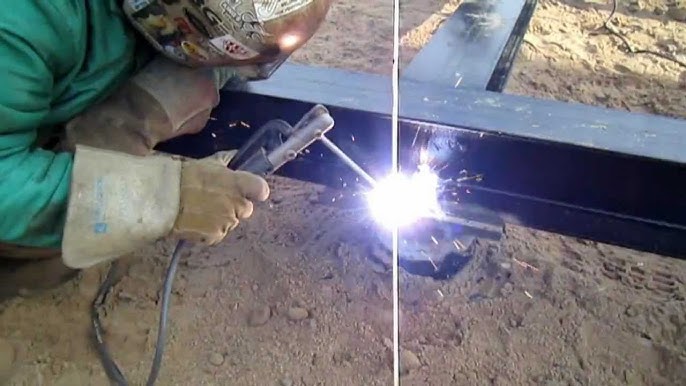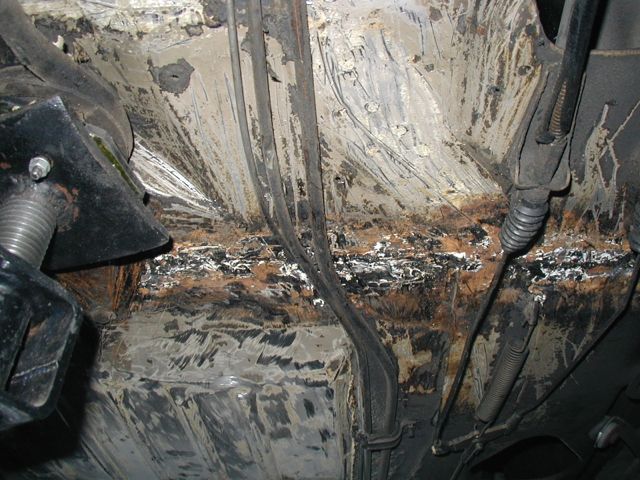Everything about Welding: Secret Insights Into Techniques and Ideal Practices for Success
Welding incorporates a variety of techniques, each suited for particular products and applications. Comprehending these methods, such as GMAW, SMAW, and TIG, is crucial for attaining perfect outcomes. The best tools and safety practices can not be overlooked. As preparation and fixing play important roles in the welding procedure, understanding these components can greatly boost the high quality of the final item. What are the crucial aspects that guarantee a successful weld?
Understanding Various Welding Methods
Welding methods encompass a selection of techniques, each suited to certain applications and products. Amongst one of the most common methods are Gas Metal Arc Welding (GMAW), Protected Metal Arc Welding (SMAW), and Tungsten Inert Gas Welding (TIG) GMAW, also referred to as MIG welding, is popular for its rate and convenience, making it perfect for slim materials. SMAW, or stick welding, is favored for its simplicity and effectiveness in outside atmospheres, specifically with thicker metals. TIG welding offers accuracy and control, making it suitable for intricate work and non-ferrous steels (Montana Mobile Welding and Repair Belgrade Fabrication). Each method has its distinct benefits and considerations, permitting welders to pick the very best technique based on the task's requirements, product kind, and wanted outcomes. Understanding these methods is essential for successful welding
Necessary Welding Tools and Devices
While numerous welding strategies need details skills, the best equipment and devices are equally necessary for achieving high quality outcomes. Essential welding tools includes welding makers, which vary depending on the technique-- such as MIG, TIG, or stick welding. Protective gear, including aprons, helmets, and gloves, assurances safety and comfort during the process. Furthermore, clamps and fixtures help safeguard products in position, guaranteeing precision in welds. Consumables like welding rods, cable, and securing gas are additionally crucial elements that influence the quality of the weld. Furthermore, tools such as mills and cutters help with surface prep work and post-weld finishing, contributing to an expert outcome. Investing in premium equipment inevitably enhances the effectiveness and efficiency of welding projects.
Safety Practices in Welding
Proper security methods are crucial in the welding market to protect employees from prospective risks. Welders need to put on ideal personal protective tools (PPE), consisting of helmets with correct shading, gloves, and flame-resistant clothing. Sufficient air flow is important to reduce direct exposure to harmful fumes and gases produced during the welding process. In addition, employees must be learnt the correct handling of welding equipment to protect against mishaps. Fire precaution, such as keeping combustible materials far from the welding location and having fire extinguishers easily available, are necessary. Regular evaluations of tools and work areas can help identify possible risks prior to they cause mishaps. By adhering to these security techniques, welders can create a much safer working setting and reduce dangers connected with their profession.
Readying Materials for Welding
Preparing products for welding is an essential step that considerably affects the high quality and honesty of the end product (Montana Mobile Welding and Repair Belgrade Fabrication). Appropriate prep work includes cleaning up the surfaces to eliminate contaminants such as dirt, corrosion, and oil, which can jeopardize the weld. Methods such as grinding, fining sand, or using solvents are frequently employed to attain a clean surface. In addition, ensuring that the materials mesh comfortably is crucial; voids can result in weak welds. It's additionally crucial to take right into account the placement and positioning of the components, as this will influence the convenience of welding and the final end result. Selecting the ideal filler product and ensuring compatibility with the base metals is essential for accomplishing strong, long lasting welds.
Tips for Getting High-Quality Welds
Attaining top notch welds requires interest to detail and adherence to finest methods throughout the welding process. Appropriate joint prep work is vital, ensuring surface areas are complimentary and tidy from impurities. Selecting the appropriate filler product and welding method based upon the base steels is important for perfect bonding. Keeping constant traveling rate and angle while welding can prevent issues and promote harmony. Furthermore, managing warmth input is vital; extreme warmth can bring about bending and compromised joints. On a regular basis examining the welds during the procedure permits prompt changes if required. Utilizing appropriate post-weld treatments, such as cleansing and anxiety relief, can improve the resilience and stability of the weld, inevitably making certain a successful outcome.
Fixing Typical Welding Issues
Welding often provides obstacles that can impact the high quality and integrity of the end product. Common concerns such as porosity, inconsistent index weld beads, and getting too hot can occur, each calling for specific troubleshooting methods. Comprehending these troubles is important for welders to boost their abilities and attain suitable results.
Porosity Issues Discussed
Porosity can commonly be ignored, it remains an important issue in welding that can endanger the honesty of a finished product. Porosity refers to the visibility of little gas pockets within the weld grain, which can lead and deteriorate the joint to early failure. This trouble normally emerges from impurities, moisture, or improper securing gas coverage throughout the welding process. To mitigate porosity, welders ought to verify that the base products are clean and dry, utilize appropriate protecting gases, and maintain regular welding parameters. On a regular basis examining the equipment and environment can likewise help identify prospective problems before they show up in the weld. Attending to porosity effectively is vital for accomplishing strong, sturdy welds that satisfy high quality criteria.

Inconsistent Weld Beans
Inconsistent weld grains can substantially impact the quality and toughness of an ended up product. Numerous aspects add to this concern, including incorrect traveling speed, inaccurate amperage settings, and inconsistent electrode angles. When the welder relocates too promptly, a bead might appear narrow and do not have infiltration, while relocating also slowly can create too much accumulation. Furthermore, using the wrong amperage can lead to either damaging or extreme spatter, both of which compromise weld stability. The welder's strategy, such as irregular torch motion, can likewise lead to irregular bead appearance. To alleviate these troubles, welders must concentrate on preserving stable, controlled motions and making sure proper equipment settings to attain uniformity in their welds. Consistency is essential to attaining solid and trusted welds.
Overheating and Warping Issues
Excessive warmth throughout the welding heli arc welding procedure can cause significant overheating and warping issues, affecting the architectural honesty of the workpiece. These problems commonly materialize as distortion, which can jeopardize alignment and fit-up, making more setting up challenging. Aspects adding to overheating consist of the selection of welding criteria, such as voltage and take a trip speed, as well as the sort of material being welded. To mitigate these problems, welders should maintain constant travel speed and ideal warmth input while keeping an eye on the workpiece temperature. In addition, preheating or post-weld heat therapy can assist relieve tensions triggered by rapid air conditioning - Fabrication. Routine examination and adherence to best methods are vital in protecting against getting too hot and ensuring the durability and integrity of welded structures
Regularly Asked Concerns
What Are the Occupation Opportunities in the Welding Industry?
The welding sector supplies varied career opportunities, consisting of placements as welders, instructors, inspectors, and designers. Experts can operate in manufacturing, building and construction, aerospace, and automobile sectors, gaining from strong need and affordable salaries in various functions.
Just How Can I Boost My Welding Speed Without Sacrificing Top Quality?
To boost welding rate without sacrificing quality, one must practice efficient strategies, preserve devices, maximize settings, view website and boost hand-eye coordination. Routine training and seeking comments can likewise significantly add to achieving faster, top quality welds.
What Qualifications Are Readily Available for Welders?
Many qualifications exist for welders, consisting of those from the American Welding Society (AWS), the National Center for Building And Construction Education and Research Study (NCCER), and numerous industry-specific organizations. These credentials improve employability and demonstrate skill proficiency.
How Does Welding Impact the Qualities of Metals?
Welding affects the properties of steels by changing their microstructure, which can bring about modifications in ductility, strength, and hardness. Warmth input and air conditioning prices during the procedure considerably influence these product characteristics.
Can I Bonded Dissimilar Metals Together?
